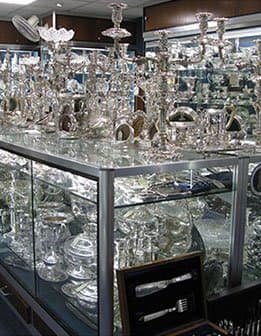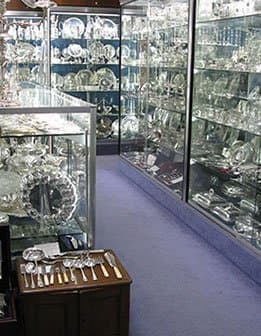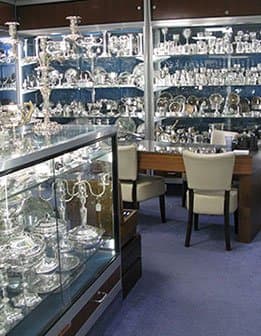In my last blog I made an attempt to calculate the cost of producing silverware in the late 18th century with reference to a modern perspective, and came to the conclusion that the real cost of the raw material (silver) was approximately four times higher in real terms inflation adjusted than today (2021), but the cost of labour was at least three times cheaper. But what was the real cost of producing silver by the 1930s?
To assist me with this, I have found one of my grandfather’s manufacturers catalogues from the early 1930s. The catalogue was produced by James Dixon and Sons of Sheffield – one of the largest manufacturers of general silverware during this period. The next question to be addressed, is what was the price of silver and how much to allow for 90 years of inflation. The price of silver is an easy answer, as during the early 1930s it averaged between 7-10 pence (whereas in the latter part of the 18th century it averaged 26 pence). We can now see that the price of the raw material (silver) had collapsed inflation adjusted to about 80 to 90 percent of its former value (late 1700s).


The new price of a pair candelabra in 2021 term approx. £3,000 a pair with silver at 7-10 per ounce. Second-hand price £980.00 for this single James Dixon candelabrum, with silver at £19 per ounce.
Using Humes measuring worth site and comparing different products (including pints of Guinness and Mars bars!), I have settled on a multiplier of about 100 times from the early 1930s to 2021. On this basis, we can now see that the raw material (silver) was approximately £7 to £10 an ounce adjusted to a modern context (2021). The price of silver today is around £19 per ounce – so in real terms about double the 1930s price but still only a quarter of the late 18th century price.
The next step is to examine the items for sale in the catalogue that are manufactured today. On examination of various commonly made items such as salvers, candelabra and tea sets, it is clear that adjusting for inflation and the fact that the real price of silver is now double that, manufacturing in the 1930s probably averaged 40 percent cheaper than today. It is also noticeable, that if the article is of a complex nature with a lot of labour needed, the difference is even greater. Even though labour was clearly cheaper in the 1930s, it was still more than double the price of 1787 (the year I selected for my first blog). When one compares the relative costs today, manufacturing new silver makes little sense. For example, new ten inch silver salvers are around £2000 whereas a better made 1930s equivalent (new retail price 1930s approx. £1100 in 2021 prices) would sell for around £600 – £700 and an 18th century original (which is better made than both the previous!) would be somewhere say around £1500. The problem that a modern silversmith encounters is a combination of labour rates and the relative inexpensiveness of the antique equivalent.


A 16 ounce Teapot by James Dixon new price 1930s £1115.00 at £7 – £10 per ounce; even with the silver price double today the second hand item is still around 40% cheaper at £685.00 with silver at £19 per ounce.
When I started in the family business in the early 1980s, we used to commission and sell 18th century reproduction coffee pots for around 400 pounds (The original mid eighteenth-century pot sold for around 3000 pounds). To make and sell a brand new one today would be about 2500-3000 pounds and to buy the original would be cheaper than a new one! The upshot to this is that 40 years ago we could make seven or eight pots for the price of an original and now we sell originals for less than a new one and reproductions from the 20th century can be bought for around 700-900 pounds. Unfortunately, this scenario can be seen in most art and architecture – if you ever wondered why modern buildings are so devoid of artistry, look no further than labour costs (superb detail which used to be a prerequisite is now redundant). When I see adverts for new build flats with slogans such as “cool contemporary living”, the cynic in me thinks soulless overpriced box!
The number of manufacturing silversmiths today would be a mere fraction of those even 30 – 40 years ago as they would find it impossible to compete with the antique market and many have either retired, moved into restoration, or changed career. This scenario is repeated in many other areas. As an example, there were 360 piano manufacturers at the time of the First World War – there are now none in England.
In my next blog, I’ll be talking about the relative values of antique silver over the past half century in relation to a modern context.
Our Makers
An A to Z list of silversmiths featured on our website
About Us
If you see something in Archive that you would have liked please contact us as we might be able to source
Our Store
Our store is situated in vaults 3 and 5 on the right-hand side of the main corridor at The London Silver Vaults



